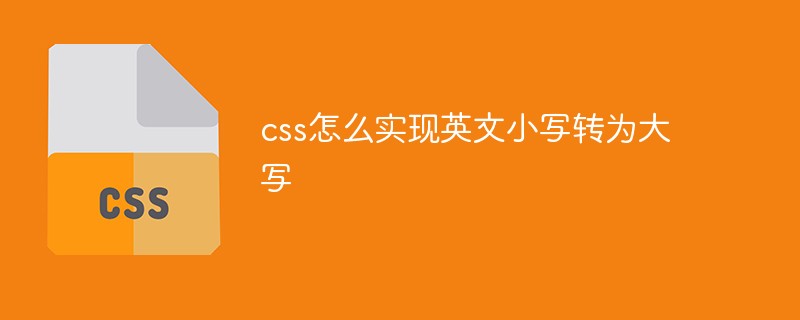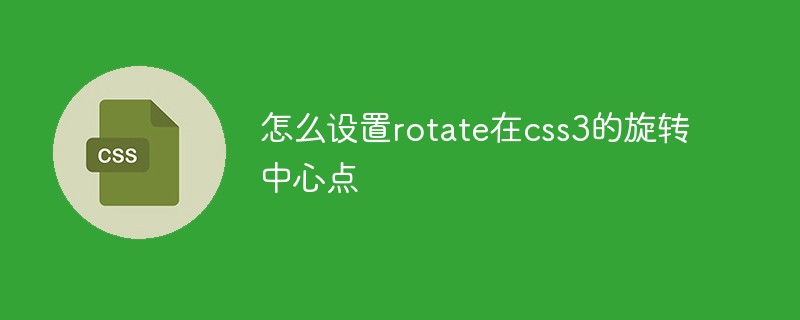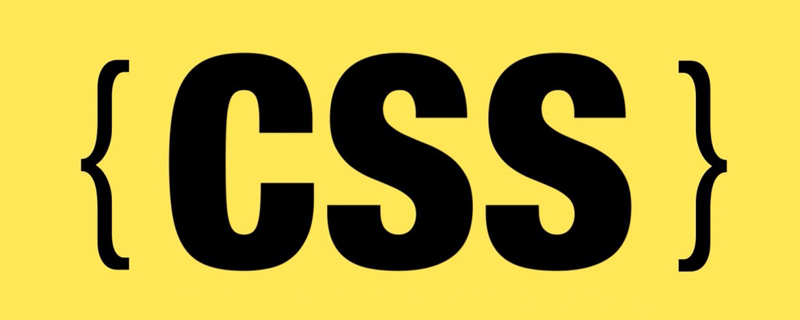 Web Front-end
Web Front-end CSS Tutorial
CSS Tutorial Elementary article: How to use CSS3 to create love loading (detailed code explanation)
Elementary article: How to use CSS3 to create love loading (detailed code explanation)In the previous article "Teach you step by step how to use CSS to create a realistic water ripple effect (with code)", I introduced you how to use CSS to create a realistic water ripple effect. The following article will introduce to you how to use CSS3 to create love loading. Let’s see how to do it together.

There are often such CSS3 love loads in web pages. Let me share with you the renderings. After viewing the effects, let’s study how to achieve it. For everyone Used to explain the basic process of html css image text layout.
The effect looks like this

1. First, create a new HTML file and define 9 div tags.
<div class="header-0"></div>
<div class="header-1"></div>
<div class="header-2"></div>
<div class="header-3"></div>
<div class="header-4"></div>
<div class="header-5"></div>
<div class="header-6"></div>
<div class="header-7"></div>
<div class="header-8"></div>2. Start defining the css style to modify and add the background-color attribute to set the background color, set the width to 100%, set the height to 100%, margin Property sets all margin properties.
body {
width: 100%;
height: 100%;
margin: 0;
background-color: #ccc;
}3. Container title text style, use align-items attribute to center align.
.container {
display: flex;
width: 100%;
height: 100%;
justify-content: center;
align-items: center;4. Header title text style, use the position attribute to specify the positioning of an element.
.header {
position: relative;
width: 138px;
/* display: flex; */5. class*='header-'title text style, use the position attribute to position the element, the syntax is "position: absolute;top: -5px;border-radius: 5px" generates an absolutely positioned element.
[class*='header-']{
position: absolute;
width: 10px;
height: 10px;
top: -5px;
border-radius: 5px;
}6. Header0-8 title text style, use animation (animation) attribute to bind to every 8 elements to make the elements swing.
.header-0,
.header-8 {
animation: header-0 3.2s infinite;
}
.header-1,
.header-7 {
animation: header-1 3.2s infinite;
}
.header-2,
.header-6 {
animation: header-2 3.2s infinite;
}
.header-3,
.header-5 {
animation: header-3 3.2s infinite;
}
.header-4 {
animation: header-4 3.2s infinite;
}7. Use 4 @keyframes rules to gradually change the 4 created animations from 0% to 100% for the opening animation.
@keyframes header-0 {
0%,
10%,
90%,
100% {
height: 10px;
top: -5px;
}
45%,
55% {
height: 30px;
top: -10px;
}
}
@keyframes header-1 {
0%,
10%,
90%,
100% {
height: 10px;
top: -5px;
}
45%,
55% {
height: 60px;
top: -31px;
}
}
@keyframes header-2 {
0%,
10%,
90%,
100% {
height: 10px;
top: -5px;
}
45%,
55% {
height: 80px;
top: -37px;
}
}
@keyframes header-3 {
0%,
10%,
90%,
100% {
height: 10px;
top: -5px;
}
45%,
55% {
height: 90px;
top: -31px;
}
}
@keyframes header-4 {
0%,
10%,
90%,
100% {
height: 10px;
top: -5px;
}
45%,
55% {
height: 94px;
top: -23px;
}8. Add the animation-delay attribute to header0-8 title text style and wait for 1 second before starting the animation. The background attribute sets the color and binds 8 elements.
.header-0 {
left: 0;
animation-delay: 0s;
background: #92fe9d;
}
.header-1 {
left: 16px;
animation-delay: 0.15s;
background: #00c9ff;
}
.header-2 {
left: 32px;
animation-delay: 0.3s;
background: #ff758c;
}
.header-3 {
left: 48px;
animation-delay: 0.45s;
background: #ff7eb3;
}
.header-4 {
left: 66px;
animation-delay: 0.6s;
background: #fa71cd;
}
.header-5 {
left: 82px;
animation-delay: 0.75s;
background: #6f86d6;
}
.header-6 {
left: 98px;
animation-delay: 0.9s;
background: #f9f586;
}
.header-7 {
left: 114px;
animation-delay: 1.05s;
background: #b1f4cf;
}
.header-8 {
left: 130px;
animation-delay: 1.2s;
background: #fef9d7;
}The code effect is out

The complete code below
爱心加载
<div class="header-0"></div>
<div class="header-1"></div>
<div class="header-2"></div>
<div class="header-3"></div>
<div class="header-4"></div>
<div class="header-5"></div>
<div class="header-6"></div>
<div class="header-7"></div>
<div class="header-8"></div>
Recommended learning: CSS video tutorial
The above is the detailed content of Elementary article: How to use CSS3 to create love loading (detailed code explanation). For more information, please follow other related articles on the PHP Chinese website!
 css ul标签怎么去掉圆点Apr 25, 2022 pm 05:55 PM
css ul标签怎么去掉圆点Apr 25, 2022 pm 05:55 PM在css中,可用list-style-type属性来去掉ul的圆点标记,语法为“ul{list-style-type:none}”;list-style-type属性可设置列表项标记的类型,当值为“none”可不定义标记,也可去除已有标记。
 css与xml的区别是什么Apr 24, 2022 am 11:21 AM
css与xml的区别是什么Apr 24, 2022 am 11:21 AM区别是:css是层叠样式表单,是将样式信息与网页内容分离的一种标记语言,主要用来设计网页的样式,还可以对网页各元素进行格式化;xml是可扩展标记语言,是一种数据存储语言,用于使用简单的标记描述数据,将文档分成许多部件并对这些部件加以标识。
 css3怎么实现鼠标隐藏效果Apr 27, 2022 pm 05:20 PM
css3怎么实现鼠标隐藏效果Apr 27, 2022 pm 05:20 PM在css中,可以利用cursor属性实现鼠标隐藏效果,该属性用于定义鼠标指针放在一个元素边界范围内时所用的光标形状,当属性值设置为none时,就可以实现鼠标隐藏效果,语法为“元素{cursor:none}”。
 rtl在css是什么意思Apr 24, 2022 am 11:07 AM
rtl在css是什么意思Apr 24, 2022 am 11:07 AM在css中,rtl是“right-to-left”的缩写,是从右往左的意思,指的是内联内容从右往左依次排布,是direction属性的一个属性值;该属性规定了文本的方向和书写方向,语法为“元素{direction:rtl}”。
 css怎么设置i不是斜体Apr 20, 2022 am 10:36 AM
css怎么设置i不是斜体Apr 20, 2022 am 10:36 AM在css中,可以利用“font-style”属性设置i元素不是斜体样式,该属性用于指定文本的字体样式,当属性值设置为“normal”时,会显示元素的标准字体样式,语法为“i元素{font-style:normal}”。
 css怎么实现英文小写转为大写Apr 25, 2022 pm 06:35 PM
css怎么实现英文小写转为大写Apr 25, 2022 pm 06:35 PM转换方法:1、给英文元素添加“text-transform: uppercase;”样式,可将所有的英文字母都变成大写;2、给英文元素添加“text-transform:capitalize;”样式,可将英文文本中每个单词的首字母变为大写。
 怎么设置rotate在css3的旋转中心点Apr 24, 2022 am 10:50 AM
怎么设置rotate在css3的旋转中心点Apr 24, 2022 am 10:50 AM在css3中,可以用“transform-origin”属性设置rotate的旋转中心点,该属性可更改转换元素的位置,第一个参数设置x轴的旋转位置,第二个参数设置y轴旋转位置,语法为“transform-origin:x轴位置 y轴位置”。


Hot AI Tools

Undresser.AI Undress
AI-powered app for creating realistic nude photos

AI Clothes Remover
Online AI tool for removing clothes from photos.

Undress AI Tool
Undress images for free

Clothoff.io
AI clothes remover

AI Hentai Generator
Generate AI Hentai for free.

Hot Article

Hot Tools

EditPlus Chinese cracked version
Small size, syntax highlighting, does not support code prompt function

Dreamweaver CS6
Visual web development tools

WebStorm Mac version
Useful JavaScript development tools

SublimeText3 Mac version
God-level code editing software (SublimeText3)

DVWA
Damn Vulnerable Web App (DVWA) is a PHP/MySQL web application that is very vulnerable. Its main goals are to be an aid for security professionals to test their skills and tools in a legal environment, to help web developers better understand the process of securing web applications, and to help teachers/students teach/learn in a classroom environment Web application security. The goal of DVWA is to practice some of the most common web vulnerabilities through a simple and straightforward interface, with varying degrees of difficulty. Please note that this software






